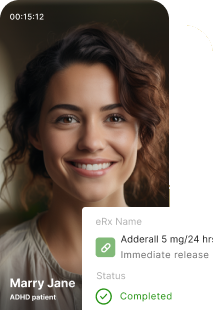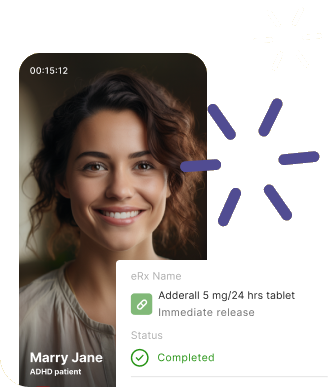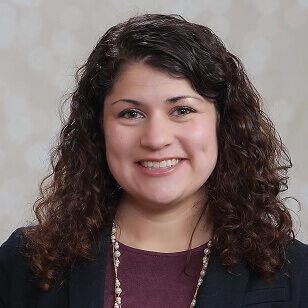Highlights
- Common withdrawal symptoms of Vyvanse include extreme fatigue, changes in appetite, depression, anxiety, and, in more severe cases, hallucinations or suicidal thoughts.
- Most symptoms of Vyvanse withdrawal peak within the first week and improve over time, though emotional symptoms may last longer.
- If symptoms become overwhelming, such as severe depression, intense cravings, extreme anxiety, or thoughts of self-harm, it’s important to seek medical help right away.
- Professional help can make the process easier and lower the risk of relapse.
While many people find Vyvanse helpful in treating attention deficit hyperactivity disorder (ADHD) and binge eating disorder, discontinuing it, especially after long-term use or high doses, can result in challenging withdrawal symptoms. Here we’ll help you understand the symptoms, how long they last, what to do if you experience them, and ways to safely stop taking Vyvanse.


What Is Vyvanse
Vyvanse (lisdexamfetamine) is a prescription
Like other central nervous system (CNS) stimulant medications, Vyvanse is a Schedule II controlled substance and carries a risk of misuse and dependence, especially in patients with a history of substance use disorder. Sometimes, after stopping Vyvanse, patients experience withdrawal symptoms; let’s explore this in more detail.
What Causes Vyvanse Withdrawal?
When Vyvanse is taken for a long time, especially at higher doses, your body adjusts to its effects and needs the increased levels of dopamine and norepinephrine to function normally. Over time, there occurs the need to take a higher dose to get the same effect, and this increases your body’s dependence on the medication.
Vyvanse Withdrawal vs. Crash
It’s easy to confuse a Vyvanse “crash” with withdrawal. They are both
|
Vyvanse Crash |
Vyvanse Withdrawal |
|
Can happen when the daily dose wears off or a dose is missed |
Happens when the medication is stopped or reduced after consistent use |
|
Begins same day, as medication wears off |
Begins 1–2 days after the last dose |
|
Symptoms typically last only hours |
Symptoms can last days to weeks |
|
Symptoms are typically mild and include fatigue, irritability, and brain fog |
Symptoms include fatigue, depression, cravings, and anxiety |
Vyvanse Withdrawal Symptoms
Withdrawal symptoms from Vyvanse can affect both the body and mind:
- Physical dependence develops when the body needs the medication to function normally, leading to withdrawal symptoms such as fatigue, headaches, or sleep disturbances when it is reduced or stopped.
- Psychological dependence involves a mental or emotional reliance on Vyvanse, which can cause intense cravings, anxiety, or difficulty functioning without the medication. The severity of these symptoms can vary depending on the dose, and how long the medication has been used. If symptoms don’t go away or become severe, it’s important to get medical help right away.
If you think you may be experiencing a substance use problem, consider seeking professional support. You can contact the SAMHSA National Helpline at 1-800-662-HELP (4357) for confidential 24/7 assistance (toll-free). If you are in immediate danger, call 911 or visit your nearest emergency room.
Physical symptoms of Vyvanse withdrawal can include:
- Fatigue and low energy
- Headaches
- Nausea or stomach upset
- Body aches and pains
- Sweating
- Changes in sleep and appetite
- Diarrhea
Psychological withdrawal symptoms can include:
- Depression
- Anxiety
- Irritability
- Intense cravings
- Trouble concentrating
- Mood swings
In rare cases, severe withdrawal effects, such as hallucinations, irregular heartbeat, and suicidal thoughts or actions, are possible.
Vyvanse Withdrawal Timeline
Typically, tapering off Vyvanse is done slowly, allowing the body to adapt and helping to prevent severe withdrawal symptoms. While every person’s experience is different, a typical
- Within 1-2 days after the medication is stopped, the symptoms typically begin. Common symptoms include fatigue, mood changes, and headaches.
- After 3-5 days, symptoms may become worse. Because of Vyvanse withdrawal, you might experience depression and intense cravings to take the medication again.
- After the first week or two, your energy and mood gradually start to improve.
- After 2 weeks, many symptoms resolve, but emotional changes may last longer in some people.
How long it takes to feel better again depends on the Vyvanse dose and how long you’ve been taking the medication.

Is It Safe to Quit Vyvanse Cold Turkey?
The safety of stopping Vyvanse abruptly is very dose dependent; quitting high doses of Vyvanse cold turkey is generally not considered safe. It’s important not to stop Vyvanse suddenly, unless instructed by your healthcare provider, as it may trigger withdrawal symptoms and may worsen underlying conditions such as ADHD. The abrupt drop in stimulant levels may lead to depression and, in some cases, suicidal thoughts. It can also cause mood swings and intense cravings, which can
Vyvanse is also sometimes prescribed to help manage binge eating disorder, and many people find it effective. But even if your binge eating feels under control, it’s important not to stop taking Vyvanse suddenly. Not only can stopping it abruptly raise the risk of withdrawal symptoms, it may even trigger a
How to Manage Vyvanse Withdrawal Safely
Managing Vyvanse withdrawal requires a
Medical Tapering
Your doctor will typically recommend slowly lowering your dose over a period of days or weeks to minimize withdrawal symptoms. In some cases, providers may also prescribe medications to help ease symptoms and cravings.
Self-help
Healthy lifestyle choices, including a balanced diet, regular exercise, staying hydrated, and adequate sleep, can help ease physical symptoms and promote overall well-being during Vyvanse withdrawal. Activities that encourage relaxation and emotional stability, such as mindfulness or creative therapies, may also be beneficial.

Psychological Support
Counseling, including cognitive-behavioral therapy (CBT), helps individuals understand the emotional challenges that can arise when reducing or stopping the medication. A therapist can teach practical coping skills to manage cravings, mood swings, and stress, while also providing emotional support. This not only makes the withdrawal process more manageable but can also reduce the risk of relapse by helping you build healthier thought patterns and habits for long-term recovery.
Monitoring of Severe Symptoms
When stopping Vyvasne, it’s important to watch for signs that symptoms are becoming more severe or potentially dangerous. Worsening depression, intense cravings, severe anxiety, or any thoughts of self-harm require immediate medical attention. Keeping regular check-ins with a healthcare provider ensures that changes in mood or health are addressed promptly, helping to prevent complications and support a safer recovery process.
If you’re experiencing suicidal or self-harming thoughts and require immediate assistance, contact a crisis hotline, such as 911, 988 suicide & crisis lifeline (toll-free), or Samaritans (116-123 or via chat).
Professional Support & Treatment Options
Professional support can make stopping Vyvansel safer and more manageable. For most people, outpatient care with regular monitoring and medical check-ins is enough, while in rare cases others may benefit from the added support of a detox program. Having expert guidance means you don’t have to go through the process alone and can feel more confident about your recovery.
Outpatient Care
Regular appointments for medication adjustments with your healthcare provider and behavioral support for those with milder symptoms can generally be done on an outpatient basis. These programs may involve regular therapy sessions with a counselor or therapist to help manage psychological symptoms or other issues related to addiction. Outpatient Vyvanse withdrawal treatment also offers flexible scheduling options so you can continue to take care of your daily responsibilities.
At MEDvidi, licensed professionals provide convenient online consultations. Whether you are taking stimulants for ADHD and need a Vyvanse prescription or want to taper off Vyvanse and manage withdrawal symptoms, our medical professionals can create a personalized plan for you.
Inpatient Detox Programs
For those struggling with a more severe addiction and withdrawal symptoms, an inpatient medical detoxification program may be the best option. These programs provide 24-hour medical supervision, as well as therapy and other forms of support for individuals going through addiction treatment and detox.
Preventing Vyvanse Dependence and Withdrawal
While not all withdrawal symptoms can be avoided, there are some things you can do to reduce the risk of withdrawal when you discontinue Vyvanse. These include:
- Taking Vyvanse exactly as prescribed by your doctor
- Scheduling regular check-ins with your doctor
- Not taking a dose higher than what your doctor prescribed
- Avoiding suddenly stopping the medication
- Not taking Vyvanse prescribed for another person
Always talk with your doctor before making changes to your dosing schedule, such as stopping Vyvanse on weekends.
Final Word
Tapering off Vyvanse should always be done under medical supervision to ensure the process is safe and symptoms are minimized. Your doctor can create a personalized plan, monitor your progress, and offer additional support to make the transition smoother.
If you are considering reducing or stopping Vyvanse, book an appointment with MEDvidi to receive a guided tapering plan and personalized support tailored to your needs.
FAQs About Vyvanse Withdrawal
How long does Vyvanse withdrawal last?
Most people will notice a significant improvement in symptoms within 1-2 weeks. However, some emotional effects, such as low mood or cravings, can linger for several weeks.
What happens when you quit Vyvanse cold turkey?
Stopping Vyvanse cold turkey can trigger a sudden drop in stimulant levels, leading to intense side effects and withdrawal symptoms. These may include extreme fatigue, irritability, depression, agitation, and strong cravings, which can increase the risk of relapse.
Does Vyvanse need to be weaned off?
Yes, Vyvanse should generally be weaned off gradually rather than stopped abruptly. Tapering under the guidance of a healthcare provider allows your body to adjust to lower doses, reducing the risk of uncomfortable or severe withdrawal symptoms such as fatigue, depression, and cravings.
Why am I so tired when I don’t take my Vyvanse?
Feeling extremely tired when you don’t take Vyvanse is a common withdrawal symptom known as Vyvanse withdrawal fatigue. This fatigue is usually temporary and improves as your body readjusts. If the tiredness is severe, persistent, or accompanied by other concerning symptoms like depression, it’s important to speak with your healthcare provider.
How to get energy back after quitting Vyvanse?
To get your energy back after quitting Vyvanse, focus on consistent, restorative sleep, a balanced diet, regular exercise, and staying hydrated. If fatigue persists, consult a healthcare provider for additional guidance.
Is it good to take breaks from Vyvanse?
Taking breaks from Vyvanse, sometimes called “drug holidays,” can be helpful in certain situations. However, while planned breaks may reduce side effects or tolerance, they can also trigger withdrawal symptoms or affect daily functioning.
Can you take a break from Vyvanse on weekends?
In some people, weekend breaks can lead to withdrawal symptoms such as fatigue, irritability, or difficulty concentrating. Talk to your doctor if you want to adjust your treatment plan.












